What are the most expensive perfume ingredients and why are they so costly? Our team explores 8 of the highest-priced substances used by master perfumers in fragrance formulations, from ambergris and Oud to Orris root and Neroli to name a few!
Have you ever wondered why some perfumes cost so much and others are less expensive?
While you have probably surmised that the answer concerns the contents of the fragrance, the answer is much deeper, as it lies in the rarity and labor intensive methods that are employed to extract many of the superior essential oils that are at the heart of every luxurious formulation.
For our master perfumers at Alpha Aromatics, the elusive and delicate character of luxurious perfume must always be nurtured and respected a the only accessory that is always there, yet never seen.
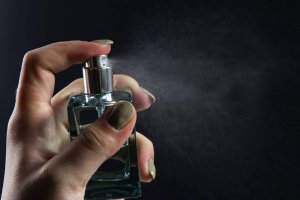
What are the Sources Of The Most Expensive Perfumes?
Some of the most exquisite ingredients are derived from the ethereal world of flowers and their aromatic essential oils.
In an odd twist of nature, others come from the glands of animal and the intestines of whales and from wood that is infected with a particular mold.
Expensive perfumes are specifically formulated to contain numerous layers of scents.
Some include notes of fruits, flowers, and spices or herbs. All of the other scents blended into a particular composition combine to unveil an intricate, unique and arresting scent, which feels “expensive” on one’s skin.
8 Of The Most Expensive Perfume Ingredients
Ambergris
Also known as gray amber, the treasure of the sea and floating gold, this extremely costly fixative that derives from the digestive system of the sperm whale is known for its superior tenacity in perfume compositions.
The exact nature of it formation remains unknown, and it is not found in some of the sperm whale’s closest relatives; namely the Pygmy and Dwarf species.
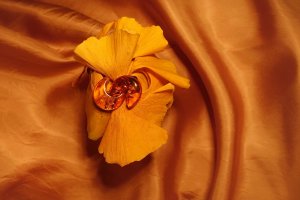
Its perceived ability to elevate other olfactory notes is highly prized, but due to legal issues, the synthetic version, Ambroxan, which is synthesized from a naturally occurring molecule in the Clary sage plant, is often used instead.
It somewhat simulates its uniquely warm, leathery and spicy character.
Ambergris perfumes are in constant demand, but barely 1% of all sperm whales secrete ambergris.
This rarity is the reason for its prohibitive cost as a raw material for perfume.
In England in 2013, a six and one-half-pound block was found, and its value was estimated at more more than 100,000 euros ($1,046,419.34 ). Today, the price stands at approximately $10,000 per pound.
Bulgarian Rose
Some 10,000 pounds of rose petals are required to steam distill just one pound of precious rose damascene oil.
For the last three centuries, the world’s rose oil has been produced during a very short picking season lasting from May to June every year in the Bulgarian Rose Valley.
Workers are usually women and they must perform their jobs quickly after dark before the sun rises. Each flower must be carefully cut, placed in a willow basket and rushed to the distillery.
Generally speaking, it is not uncommon to pay more than $230 for just 1/8 of an ounce of this glorious scent, which serves as a heart note distinguished by a sugary, rosy floral fragrance tinged with the whisper of exotic spice.
In addition to its use in the many superior perfumes developed by Alpha Aromatics, Bulgarian rose absolute essential oil is often found in skin care lotions and creams.
It blends seamlessly with facets such as: earthy patchouli; soothing lavender; creamy sandalwood; clean, fresh lemon, intense and intoxicating jasmine; playful, peppery ginger; green, powdery fennel; warm, sweet clary sage; lush mandarin, light, bitter neroli; sugary, tart pettigrain, herbal geranium and musty, balsamic vetiver.
Frankincense
An ancient and highly coveted fragrance dating back more than 6,000 years, its true name, francencens, is French in origin, meaning pure incense or lightning.
At one time worth its weight in gold, historians surmise that its constant demand was responsible, at least in part, for the opening of the ancient trade routes.
There are more than 500 species of Boswellia trees, which are also known as the “incense tree family” and are famous for both their aromatic bark and redolent sap.
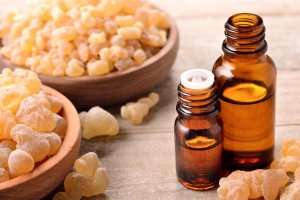
True frankincense derives from only a small number of these trees and its scarcity makes it an extremely rare and costly ingredient.
Harvesting frankincense requires time and patience. Workers cut the outer bark of the tree with a sharp metal knife, which causes the resin it contains to bleed out.
They return a few weeks later to collect the resin “tears” that have flowed from the tree, carefully sorting them according to their specific grade and storing them in cool caves.
Master perfumers often combine frankincense with floral head notes and for use in splendid dry downs as a lingering essence that that is soft, smooth and earthy.
Today, frankincense can cost as much as $6,000 per liter (33.81 fluid ounces).
Jasmine Essential Oil
This absolute essential oil is extraordinary because of its one-of-a kind, exotic floral essence. Seductive and passionate, many cultures regard it as an aphrodisiac.
This highly coveted and concentrated essential oil takes about 2,000 pounds of jasmine flowers to produce one single pound of oil. Some 8,000 blooms are needed to yield 1/25 ounce of this exquisite oil.
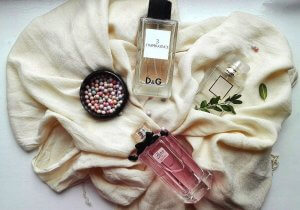
Their fragility demands careful placement in special baskets that protect the petals from bruising. Jasmine blooms unlike Bulgarian rose, cannot be successfully steam distilled without the use of a solvent, which is extremely concentrated.
Both male and female fragrances and scented products feature luscious, sweet jasmine absolute, but its prohibitive cost of up to $5,000 per kilo, is usually deferred by a synthetic version, which is used in more than 80% of all women’s fragrances developed by Alpha Aromatics.
Neroli Essential Oil
Fairly unknown although extremely precious, this coveted essential oil is extracted from the blooms of the bitter orange tree (Citrus aurantium), which is grown commercially in Egypt, Morocco and Tunisia.
Pure neroli is favored as a head note in fine formulations, and is cherished for its green, fresh scent with its slightest hint of mild, deeply aromatic tea.
It is a source of accords that are meticulously formulated with citrus aspects, woody rosemary, spicy, potent thyme and floral, rich and intense jasmine. Neroli’s one-of-a-kind green and fruity flavor is also used as a flavoring.
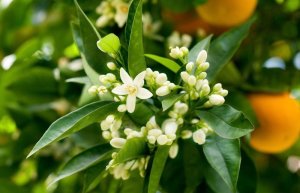
Neroli is steam distilled, and its high cost is due to several factors. For one, it requires one thousand kilograms (roughly 2,000 pounds) of hand-picked blooms to create a single kilo (2 pounds) of neroli essential oil. Harvesting occurs between April and early May.
Distillation is an incredibly long process, as farmers must wait at least five years before the blooms can be picked.
Even the quintessence of patience, the biblical man named Job, would have flinched at the additional five years necessary for the tree itself to reach its full maturity.
Richly endowed with valuable organic compounds such as: linalool, limonene, linalyl acetate, and alpha terpinol, the price of Indian neroli essential per kilo is approximately #6,000!
Orris Root Essential Oil
This powdery earthy, buttery and soft scent is nuanced by woody, violet flower. It derives from the dried and ground root of the Iris plant.
Highly coveted as a base note and fixative in high end natural perfumes, throughout history, orris has been found in both light eau de colognes and highly concentrated, intoxicating white floral scents.
It is extremely potent and only a few drops are needed to produce its exalting, beautiful and unforgettable scent.
According to James Craven, perfume archivist at Les Sentiers in London, orris root is in the top tier of the most expensive fragrances in the world because it comes from rhizomes that have been dormant in the ground for three years after which they are dried and aged for three more years.
It is during this six-year period that oxidative processes begin to yield molecules known as irones from which the exquisite fragrance is born.
It requires one ton of iris plant bulbs to produce 4 pounds of orris essential oil.
Oudh
Considered precious and costly and dating as far back as biblical times, oudh has earned its proper and mystical place in the modern world of perfumery. Its name derives from the Arabic word meaning wood.
Dense and rich, its power to enhance other facets in a perfume composition can sometimes overwhelm them.
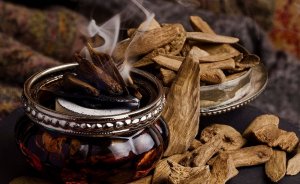
Usually a base note that serves as a warm, smoky fragrance fixative, it is distinctively pleasing and sweet rather than earthy and passionate, as are many wood family notes. Perfumers at Alpha Aromatics refer to oudh as the “five thousand dollar per pound scent,” which is no exaggeration as to its purchase value.
The treasured resin only develops from the formation of an infected heartwood mold, which experts surmise only occurs in one out of every ten agar trees found in the dense forests of Southeast Asia, India and Bangladesh.
Many of these trees are considered threatened species, and the perfumers at Alpha Aromatics have come to rely on a synthetic version.
This single ingredient represents the quintessence of Middle Eastern perfume and tradition.
The distillation process involves soaking about 10 kilos of agar chips in water for a week before the process.
Its approximate price is $5,000 per.kilo. Two thousand dollars can buy one ml (004 of a cup) of a fluid ounce of oudh.
Sandalwood
Sandalwood trees are in a special class of wood that is heavy, yellow, and fine-grained. Unlike other aromatic varieties, the power of their fragrance can linger for many years, even decades.
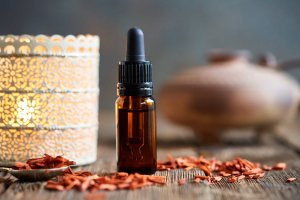
Cultivated for their precious heartwood since ancient times, the trees grow very slowly and require about 30 years for the heartwood to reach the necessary stage of thickness. It character is deep and woody and is often a blend of soft, rich floral, balsamic and sweet nuances.
It is most often found in the base notes of many classic perfumes and colognes. A kilogram is priced at $200 and red sandalwood logs cost between $3,000 to $6,000 per kilo
Make Your Most Opulent Olfactory Dreams Come True!
Headquartered in suburban Pittsburgh, Pennsylvania and in existence for almost eight decades, we are a global leader and pioneer within the perfume industry.
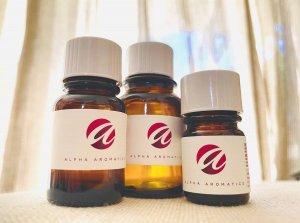
State-of-the-art laboratory facilities and the most innovative tools in the world of industrial science create superior quality perfumes, scents for candles and diffusers, personal care products, fragrances for home products and odor neutralizers, just to name a few.
If you are seeking a new perfume formulation either for private or commercial use, contact our teams at Alpha Aromatics today!
Photo Credits: Pixabay
 alpha aromatics®
alpha aromatics®